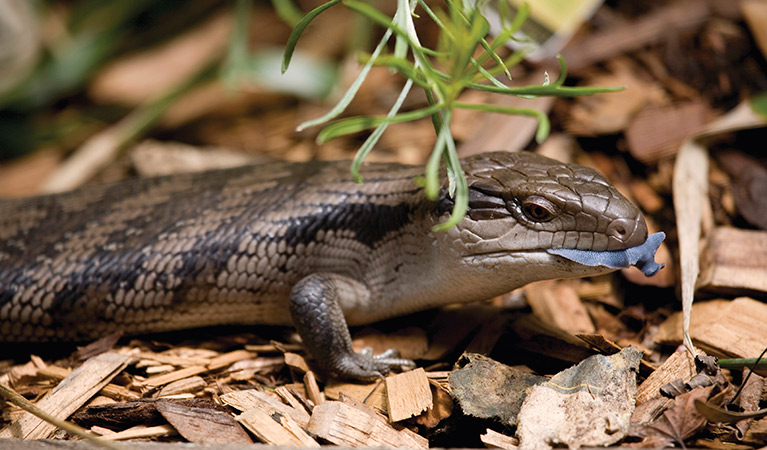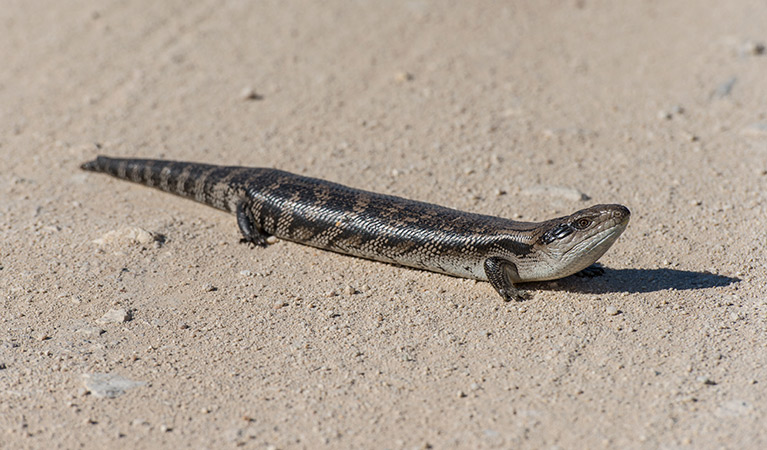Eastern blue-tongue lizard
The eastern blue-tongue lizard, one of the largest skinks in Australia, is found throughout most of NSW. When threatened, the eastern blue-tongue lizard displays its blue tongue in a wide-mouthed intimidating show. Not an agile animal, they feed on slow-moving beetles and snails.
Read more about Eastern blue-tongue lizard
Found throughout NSW as far west as Cobar, the eastern blue-tongue lizard is one of the larger species of Australian skinks, which are characterised by their smooth, overlapping scales. The eastern blue-tongue lizard has a wide flattened head and a stout silver-grey body covered with blackish stripes.
Although generally a shy animal, the eastern blue-tongue lizard can put on an intimidating display when threatened, opening its mouth wide and sticking out its broad blue tongue. While these Australian animals aren’t agile, blue-tongues have strong jaws, so they can crush slow-moving prey such as beetles and snails.
The eastern blue-tongue lizard prefers open woodlands with plenty of ground cover or rocky areas.
Animal facts
- Common name
- Eastern blue-tongue lizard
- Scientific name
- Tiliqua scinciodes
- Conservation status in NSW
- Protected
Parks in which this animal is found
- Bents Basin State Conservation Area
- Blackheath area in Blue Mountains National Park
- Coffs Coast Regional Park
- Glenrock State Conservation Area
- Heathcote National Park
- Kalyarr National Park
- Killalea Regional Park
- Mount Jerusalem National Park
- Murray Valley Regional Park
- Test New Tier 1 Park Tash
- William Howe Regional Park


